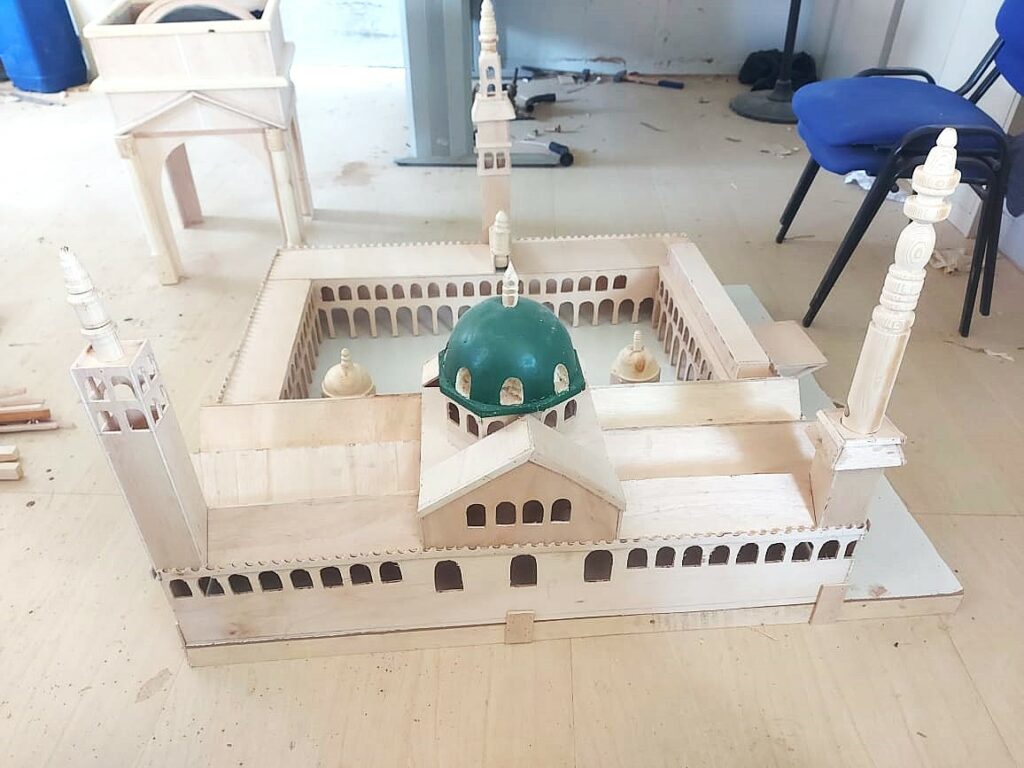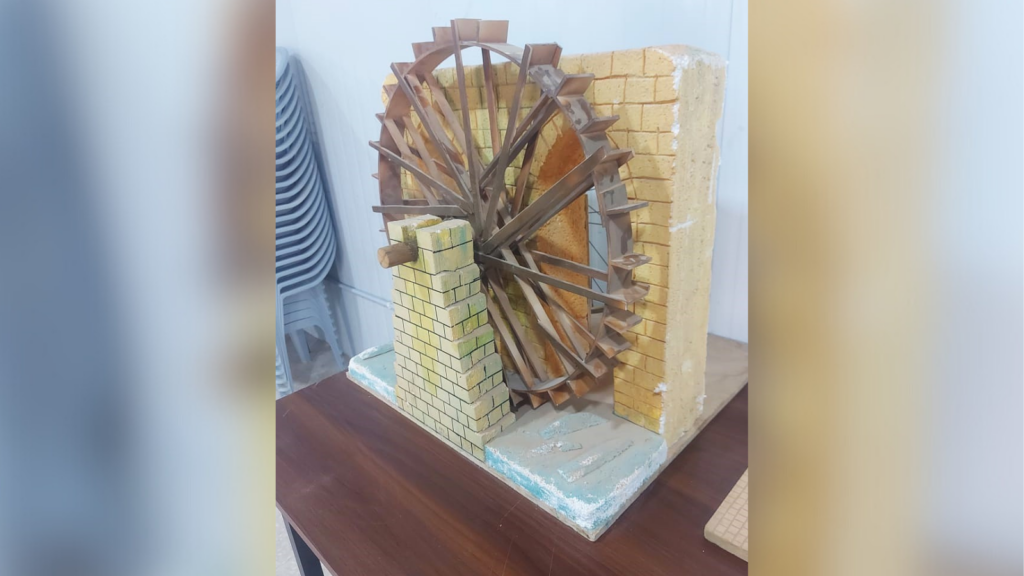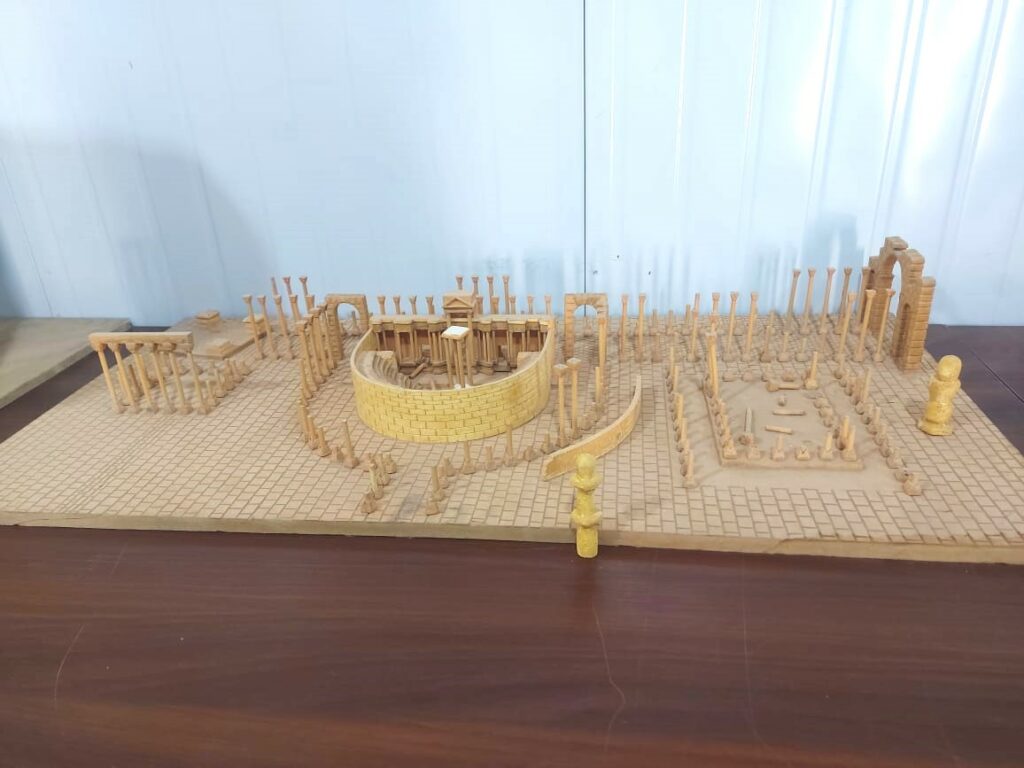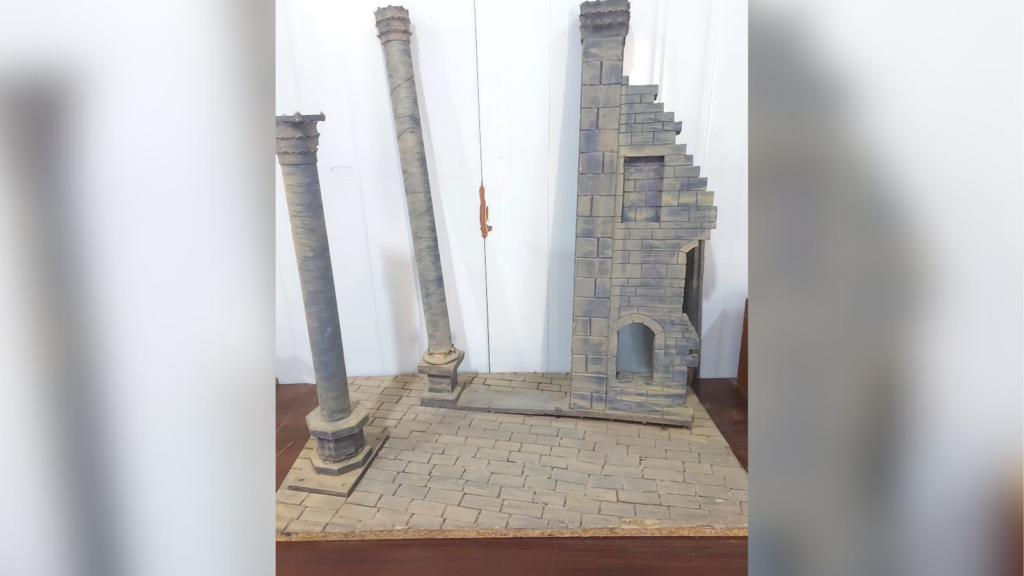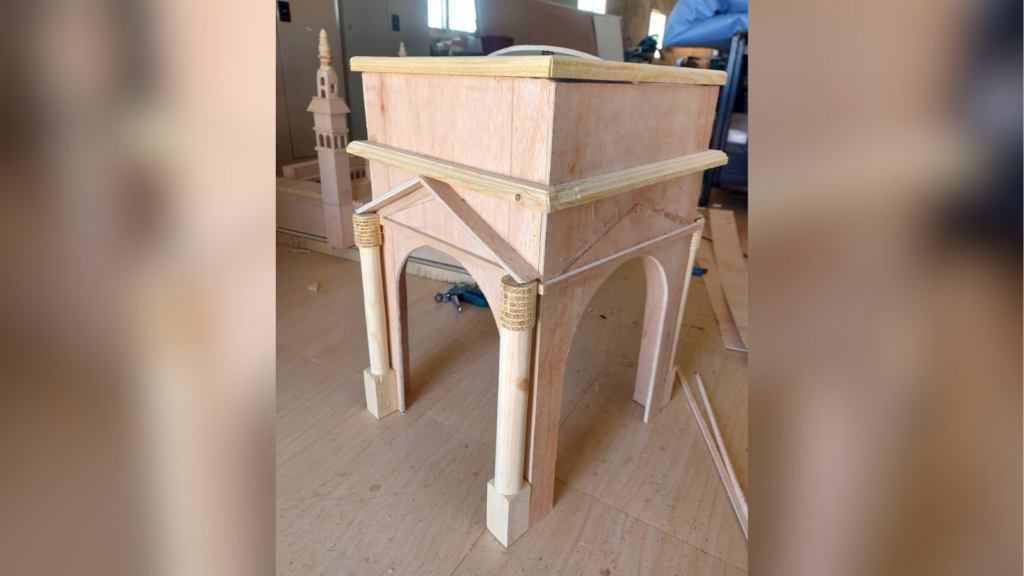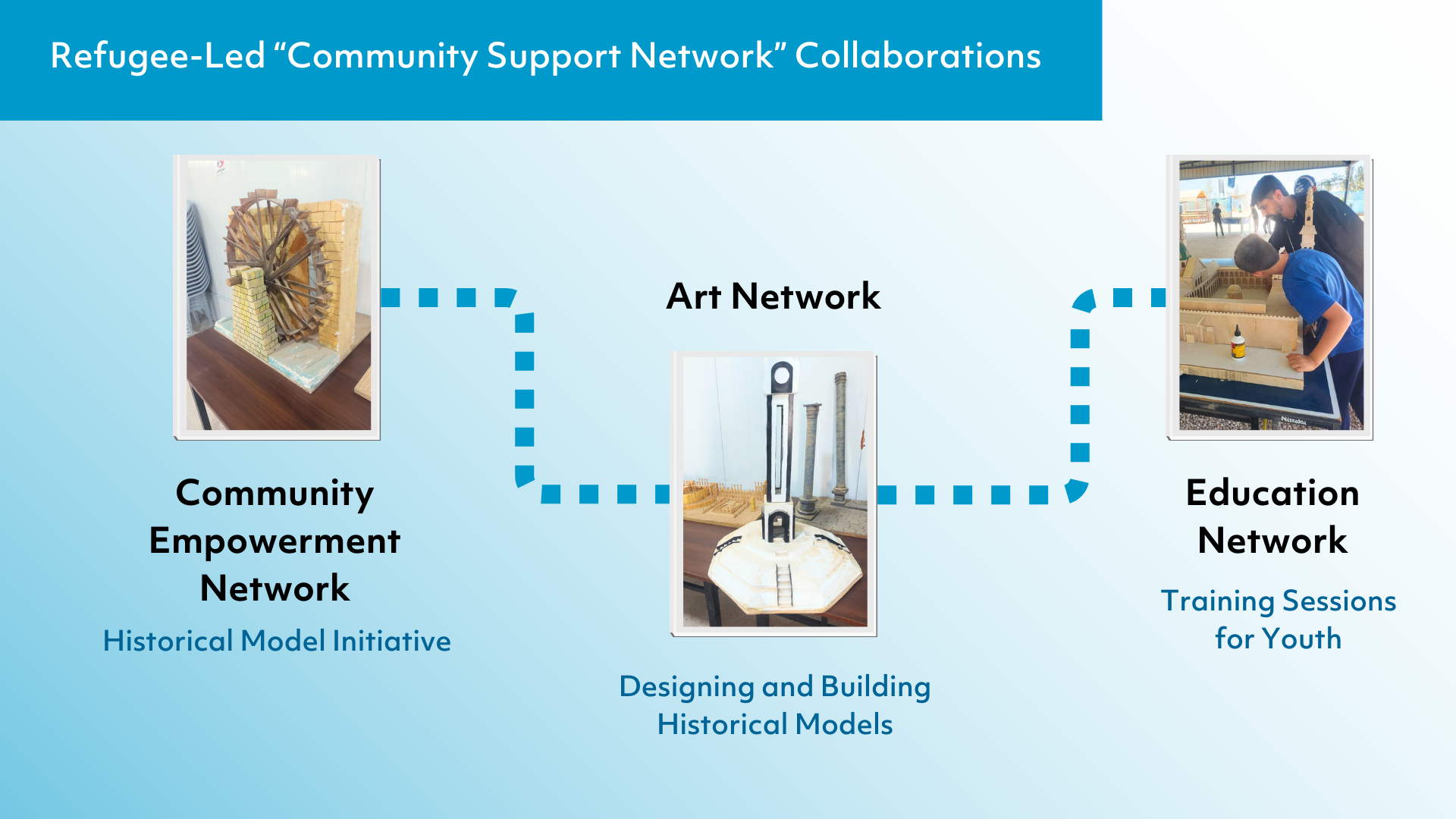This summer marked 12 years since the opening of Za’atari Refugee Camp in Jordan, where a vibrant community of almost 80,000 Syrian refugees resides. Over half of these individuals are children under the age of 18, many of whom have spent the majority—if not the entirety—of their lives living in displacement.
As violence and conflict continue to prevent Syrians from returning home, the Za’atari community decided to bring Syrian heritage directly to those who have never visited their home country. A new community initiative, supported by the Uplift program, brings history to life through nine replicas of the country’s most famous historical, cultural, and religious landmarks.
- Model of the Umayyad Mosque
- Model of Norias of Hama
- Model of the ruins of Palmyra
- Model of Sarir al-Sultan
- Details from model construction
Uplift, funded by UNHCR, empowers refugees living in Za’atari Camp to become agents of change in their community. Through affinity groups called “community support networks,” camp residents work with our team to identify community concerns, design innovative solutions, and host activities for all to enjoy. Three of these groups are working together on the initiative to bring Syrian heritage to the camp: the Community Empowerment network is the lead, supported by the Art and Education networks.
The Community Empowerment network, which is made up of seven community volunteers, supports skills development and vocational training activities in the camp’s community centers. Knowing that thousands of Syrian children have grown up in Za’atari Camp, the Community Empowerment network was inspired to launch the “Historical Model Initiative.”
The group partnered with the skilled artists and craftspeople from the Art network, who used their talents to bring Syria’s rich history to life. Replicas of sacred sites such as the Umayyad Mosque, the Norias of Hama, and the ancient city of Palmyra are now permanently displayed in our community centers for camp residents to visit.
When children and community members visit the displays, they can listen to stories and learn from volunteers. “By introducing this history to children, we are strengthening their sense of belonging to their homeland and giving them room to learn,” said Mwafaq, a member of the Uplift team.
Along with reconnecting refugees with their heritage, this activity was an opportunity for aspiring artists to practice their skills. Children and young adults watched as artisans used tools and recycled materials provided by Blumont to craft the models.
The Art network plans to partner with the refugee-led Education network to host training sessions, where young artists can gain hands-on experience by creating their own replicas.
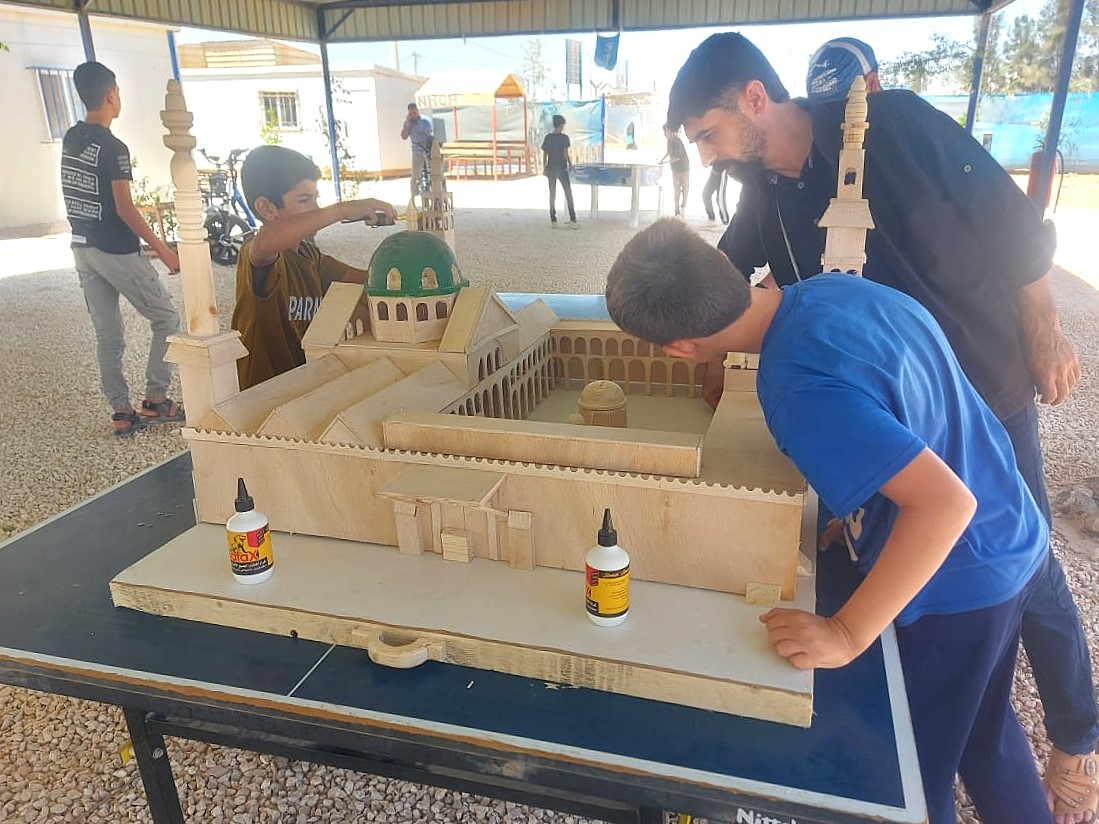
The models initiative not only served as a history lesson for children living at Za’atari Refugee Camp, but also an artistic learning opportunity.
“Through my time in the camp, art became one of my sources of livelihood. I loved contributing to this project and helping others who are interested gain experience as well,” said Ahmad, an experienced craftsman who worked on nearly all the models.
The artists, as Syrian refugees themselves, feel a special connection to the pieces they worked on. By sharing their craft with young people in the camp, they are able to strengthen their own connection to Syria. “I’m proud to introduce my country’s history to children, as the eternal connection between a citizen and his homeland cannot be expressed in words,” said Ahmad.
Jehad, 13, felt the connection between citizen and country after visiting the model displays. Although he has never lived in Syria, Jehad is proud of his origins.
“All the landmarks in Syria are beautiful, but the model of the Umayyad Mosque in Damascus is my favorite because I am originally from the Damascus countryside,” he said. “This project is a wonderful opportunity to learn about my country even though I have not lived in it.”

